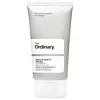What's inside
What's inside
 Key Ingredients
Key Ingredients

 Benefits
Benefits

 Concerns
Concerns

 Ingredients Side-by-side
Ingredients Side-by-side

Water
Skin ConditioningOctocrylene
UV AbsorberEthylhexyl Methoxycinnamate
UV AbsorberBenzophenone-3
UV AbsorberButyrospermum Parkii Butter
Skin ConditioningSimmondsia Chinensis Seed Oil
EmollientButyl Methoxydibenzoylmethane
UV AbsorberGlycerin
HumectantButylene Glycol
HumectantTapioca Starch
Ascorbyl Glucoside
AntioxidantCaprylic/Capric Triglyceride
MaskingCyclopentasiloxane
EmollientGlyceryl Stearate Se
EmulsifyingStearic Acid
CleansingPhenoxyethanol
PreservativeCitrus Sinensis Fruit Water
MaskingPolyacrylamide
Xylitylglucoside
HumectantBenzyl Alcohol
PerfumingSodium Stearoyl Glutamate
CleansingAnhydroxylitol
HumectantC13-14 Isoparaffin
EmollientXanthan Gum
EmulsifyingLecithin
EmollientXylitol
HumectantDisodium EDTA
Sodium Hyaluronate
HumectantSodium Sulfite
PreservativeTheobroma Cacao Seed Butter
EmollientTocopheryl Acetate
AntioxidantParfum
MaskingLimonene
PerfumingLaureth-7
EmulsifyingPolymethylsilsesquioxane
Dehydroacetic Acid
PreservativeLinalool
PerfumingGeraniol
PerfumingCitral
PerfumingPotassium Sorbate
PreservativeCitric Acid
BufferingWater, Octocrylene, Ethylhexyl Methoxycinnamate, Benzophenone-3, Butyrospermum Parkii Butter, Simmondsia Chinensis Seed Oil, Butyl Methoxydibenzoylmethane, Glycerin, Butylene Glycol, Tapioca Starch, Ascorbyl Glucoside, Caprylic/Capric Triglyceride, Cyclopentasiloxane, Glyceryl Stearate Se, Stearic Acid, Phenoxyethanol, Citrus Sinensis Fruit Water, Polyacrylamide, Xylitylglucoside, Benzyl Alcohol, Sodium Stearoyl Glutamate, Anhydroxylitol, C13-14 Isoparaffin, Xanthan Gum, Lecithin, Xylitol, Disodium EDTA, Sodium Hyaluronate, Sodium Sulfite, Theobroma Cacao Seed Butter, Tocopheryl Acetate, Parfum, Limonene, Laureth-7, Polymethylsilsesquioxane, Dehydroacetic Acid, Linalool, Geraniol, Citral, Potassium Sorbate, Citric Acid
Water
Skin ConditioningKaolin
AbrasiveSqualane
EmollientGlycerin
HumectantDimethyl Isosorbide
SolventSilica Cetyl Silylate
Salicylic Acid
MaskingSodium Polyacrylate
AbsorbentPentylene Glycol
Skin ConditioningCharcoal Powder
Abrasive4-T-Butylcyclohexanol
MaskingSclerotium Gum
Emulsion StabilisingAcacia Senegal Gum
MaskingXanthan Gum
EmulsifyingPhytic Acid
Polysorbate 20
EmulsifyingTrisodium Ethylenediamine Disuccinate
Chlorphenesin
AntimicrobialPhenoxyethanol
PreservativeWater, Kaolin, Squalane, Glycerin, Dimethyl Isosorbide, Silica Cetyl Silylate, Salicylic Acid, Sodium Polyacrylate, Pentylene Glycol, Charcoal Powder, 4-T-Butylcyclohexanol, Sclerotium Gum, Acacia Senegal Gum, Xanthan Gum, Phytic Acid, Polysorbate 20, Trisodium Ethylenediamine Disuccinate, Chlorphenesin, Phenoxyethanol
 Reviews
Reviews

Ingredients Explained
These ingredients are found in both products.
Ingredients higher up in an ingredient list are typically present in a larger amount.
Glycerin is already naturally found in your skin. It helps moisturize and protect your skin.
A study from 2016 found glycerin to be more effective as a humectant than AHAs and hyaluronic acid.
As a humectant, it helps the skin stay hydrated by pulling moisture to your skin. The low molecular weight of glycerin allows it to pull moisture into the deeper layers of your skin.
Hydrated skin improves your skin barrier; Your skin barrier helps protect against irritants and bacteria.
Glycerin has also been found to have antimicrobial and antiviral properties. Due to these properties, glycerin is often used in wound and burn treatments.
In cosmetics, glycerin is usually derived from plants such as soybean or palm. However, it can also be sourced from animals, such as tallow or animal fat.
This ingredient is organic, colorless, odorless, and non-toxic.
Glycerin is the name for this ingredient in American English. British English uses Glycerol/Glycerine.
Learn more about GlycerinPhenoxyethanol is a preservative that has germicide, antimicrobial, and aromatic properties. Studies show that phenoxyethanol can prevent microbial growth. By itself, it has a scent that is similar to that of a rose.
It's often used in formulations along with Caprylyl Glycol to preserve the shelf life of products.
Water. It's the most common cosmetic ingredient of all. You'll usually see it at the top of ingredient lists, meaning that it makes up the largest part of the product.
So why is it so popular? Water most often acts as a solvent - this means that it helps dissolve other ingredients into the formulation.
You'll also recognize water as that liquid we all need to stay alive. If you see this, drink a glass of water. Stay hydrated!
Learn more about WaterXanthan gum is used as a stabilizer and thickener within cosmetic products. It helps give products a sticky, thick feeling - preventing them from being too runny.
On the technical side of things, xanthan gum is a polysaccharide - a combination consisting of multiple sugar molecules bonded together.
Xanthan gum is a pretty common and great ingredient. It is a natural, non-toxic, non-irritating ingredient that is also commonly used in food products.
Learn more about Xanthan Gum